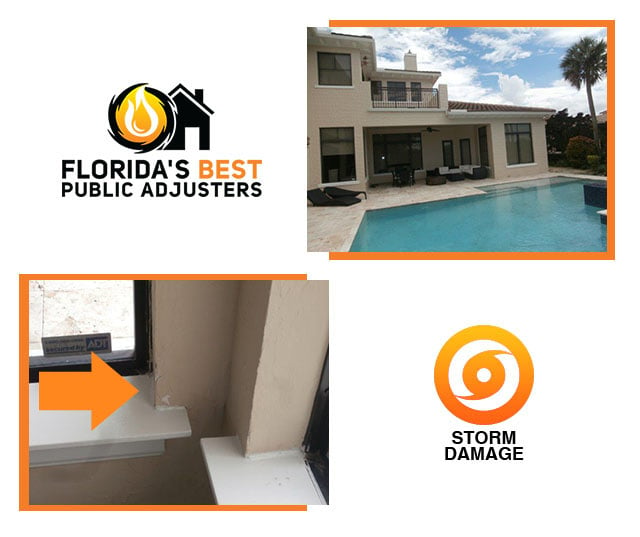FLORIDA’S BEST PUBLIC ADJUSTER PARKLAND
Water Damage Public Adjusters in Parkland
Water damage is a frequent occurrence in Florida on both residential and commercial properties. If you live in Parkland, Florida, and have filed a water damage claim with your insurance provider, then we can help maximize your settlement and make sure the process goes smoothly. Additionally, it is among the most typical reasons for filing claims with home insurance. After hail and wind damage, it ranks as the second most common insurance claim type. A property can sustain damages of $25,000 from just one inch of water, according to FEMA.
As Public Adjusters, we are pros at assisting homeowners. To make sure you receive the largest settlement as soon as possible, we will thoroughly assess the water damage, assist you in filing your claim, and negotiate the settlement with your insurance company.
Water Damage Claims: Roof Damage in Parkland, Florida
Inaccurately following the procedure can make filing an insurance claim for a roof leak difficult. Insurance companies will need reliable documentation and will be extremely wary of anyone submitting a claim. Usually, they dispatch an insurance inspector to evaluate the damage. That’s why it’s so important to have a public adjuster on your side.
The insurance company’s adjuster is there to represent the insurance company’s best interests. Working with a public adjuster will guarantee that you have the right records and supporting information; they might even send an experienced inspector to complete the assessment. These actions can all mean the difference between having your claim accepted or rejected and, more crucially, receiving the appropriate settlement sum.
Leaks in roofs can occur for several reasons. Hurricanes, tropical storms, powerful storms, strong winds, and a lot of rain are the main causes. It is particularly common during Florida’s rainy season and hurricane season. If you know where to look, it’s typically easy to find a leak in the roof.
On the other hand, roof leaks might occasionally be difficult to find. Before anything shows up, degradation may be accumulating for years. Your ceiling’s spots, stains, or cracks may be important indicators of a roof problem. When a hazard results in a loss, your insurance policy frequently covers roof leaks and damage.
The cost of replacing damaged cast iron pipes is high, and homeowners may have to take a significant amount out of pocket if their insurance company tries to minimize or reject a claim for pipe failure.
Insurance companies are legally obligated to explain their claim offer calculation process or, if a claim is denied, for their denial. In addition, they have a legal duty to look into any disagreements among policyholders. Insurance policies are written in technical legalese that can be challenging for a layperson to understand and interpret.
Because of this, collaborating with seasoned public adjusters can guarantee that your claim is handled correctly. You can be sure that your claim will be accepted and that you will receive a considerably larger settlement if you work with a broken pipe adjuster as opposed to handling it yourself.
You may easily misunderstand your policy and believe that the insurance company’s offer is sufficient if you are unfamiliar with insurance language, potentially losing out on thousands of dollars.
Cast iron drain pipes are seen in most Florida homes constructed before 1975. For many years, sewage was extensively drained through these pipelines. These pipes have an average lifespan of 30 to 70 years. Cast iron pipes begin to rust and eventually break down after being exposed to sewage water for decades. Because of concealed plumbing in utility rooms, behind walls, and in crawl spaces, these issues can be difficult to find.
One typical problem is clogged pipes. An abundance of homeowners are enticed to employ a chemical drain unclogger. The strong acidity of these substances might hasten the aging process of aged cast iron pipes.
A brief influx of water onto ordinarily dry terrain is known as flooding. In the US, it is also the most frequent natural disaster. It is prone to a large portion of Florida. Even if you don’t live close to any water, you could still be vulnerable.
Flooding is not always brought on by a lot of rain; other factors that can contribute include inadequate drainage, hurricanes, tropical storms, coastal storms, tides, and even development projects close by. It can seriously harm the roof, electrical system, structure, and anything else that comes into contact with water on a property.




